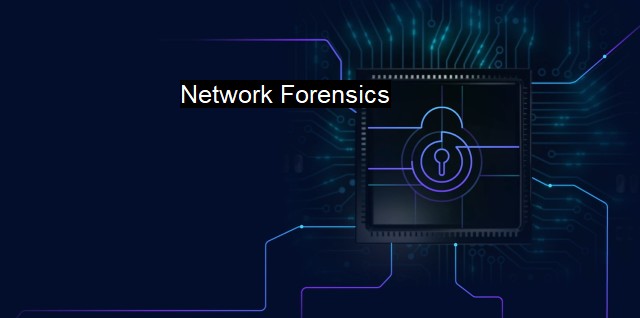What are Network Forensics?
Uncovering Hidden Threats: A Comprehensive Guide to Network Forensics for Cybersecurity and Antivirus Protection
Network Forensics is a specialized category within the broader field of digital forensics, referring to the monitoring and analysis of computer network traffic, both local and WAN/metropolitan area networks, for the purposes of information gathering, legal evidence, or intrusion detection. Network forensics can be carried out as a preventive measure, to understand if an attack is occurring or has already happened, or it can be applied after an event to help understand its scope and potentially identify the perpetrator.As more business-critical operations rely on digital networks, the incidents of highly sophisticated cyber threats are also increasing multifold. This makes the quest for robust network security crucial. In this digital era, Network forensics plays a role parallel to that of criminal forensics. The foremost purpose is to capture, record, and analyze network events in order to discover the source of security threats or system attacks.
Taking a step back, let's look at network traffic. When devices communicate over a network, they send packets of data back and forth. when you type a message into your email and hit send, the text of your email is broken down into packets and transmitted over a network. These packets are captured and analyzed in Network Forensics, ready to be reconstructed into a sequence of events or a digital trail to analyze any anomalies or attacks.
In terms of a network forensic investigation, the process typically follows a routine that comprises identification, protection, recording, preservation, examination, analysis, and reconstruction of the digital incident. There are two primary methods: 'catch-it-as-you-can,' where all packets passing through a certain traffic point are captured and analyzed later, and 'stop, look, and listen,' where each packet is considered in a brief and stateless way.
Prominent areas where network forensics is put into practice include intrusion detection and incident response mechanisms. These two processes and their efficacy directly correlate with the security and integrity of the organization’s digital infrastructure. More specifically, intrusion detection systems (IDS) are critical, they identify suspicious or malicious network traffic and produce alerts for review, and should an intrusion be detected, incident response plans kick in, detailing the necessary steps for containment, eradication, and recovery.
One area fostering the growing significance of network forensics is the pervasive use of antivirus solutions. These systems, traditionally employed to detect and remove malicious software, now function more holistically. despite the advanced technologies and algorithms underpinning their functionality, certain tenacious advanced persistent threats (APTs) manage to bypass their preventive measures leaving an organization vulnerable. Hence, network forensics is there to step in and uncover potential attacks that may have slipped through the threshold unnoticed.
Yet, network forensics doesn't exclusively work in tandem with reactive measures to incidents but is also instrumental in a proactive role, together with antivirus software, helping to secure a network. This process, called threat hunting, entails actively looking for indicators of compromise or any anomalies within the network.
No system is entirely impervious to cyber threats. But with network forensics, it is possible to piece together the causative elements of an attack to forestall future corruption. It is vital in the cybersecurity fabric, both for understanding potential threats as well as responding to any breaches of security. despite its behind-the-scenes work, network forensics is an instrumental layer of protection, resilience, and recovery. network forensics operates symbiotically with various security tools to facilitate pre-attack posture assessment, mid-attack hacking enlargement limitation, and post-attack damage control and policy remodelling.

Network Forensics FAQs
What is network forensics?
Network forensics is the process of capturing, recording, and analyzing network traffic to identify security incidents or investigate security breaches. It involves extracting information from various network devices, such as routers, switches, and firewalls, to reconstruct the chain of events that occurred during a security incident.What are the benefits of network forensics?
Network forensics provides several benefits to cybersecurity and antivirus professionals, including: identifying the source and cause of security incidents, detecting and preventing future attacks, assessing the effectiveness of security controls, and providing evidence for legal proceedings.What tools are used in network forensics?
There are several tools used in network forensics, such as Wireshark, tcpdump, Snort, and NetworkMiner. These tools capture and analyze network traffic, extract important metadata, reconstruct network sessions, and identify patterns that may indicate malicious activity.Is network forensics useful for small businesses?
Yes, network forensics is useful for small businesses as it helps detect and prevent security incidents and protect sensitive data. Small businesses may not have the same level of resources as larger enterprises, but they can still use network forensics tools to identify and respond to security threats in a timely manner.| | A | | | B | | | C | | | D | | | E | | | F | | | G | | | H | | | I | | | J | | | K | | | L | | | M | |
| | N | | | O | | | P | | | Q | | | R | | | S | | | T | | | U | | | V | | | W | | | X | | | Y | | | Z | |
| | 1 | | | 2 | | | 3 | | | 4 | | | 7 | | | 8 | | |||||||